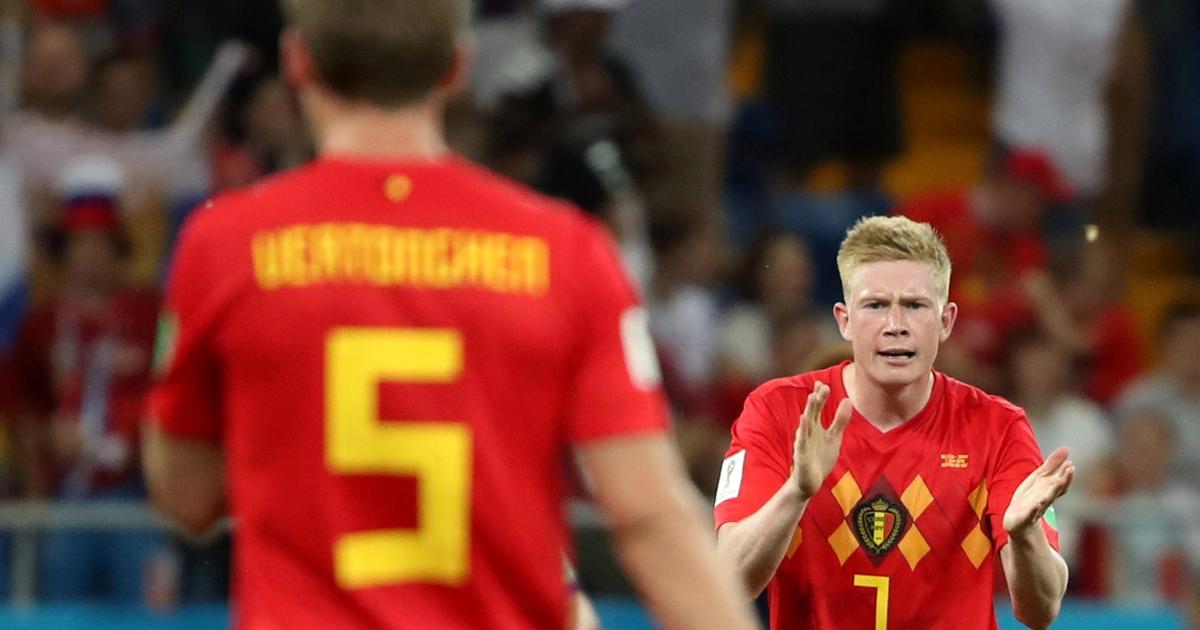REUTERS/Marko Djurica
As Genki Haraguchi and Takashi Inui made it 2-0 to Japan in four blistering second-half minutes, it seemed a damned condemnation of Roberto Martinez's attacking system.
A criticism often levelled at the Red Devils, their defensive vulnerability - deriving from Martinez's systematic imbalances - came to fruition in the last-16, as they twice conceded avoidable goals.
The comeback was phenomenal, and Belgium raised the standard of their game when it mattered most, drawing level in five second half minutes through Jan Vertonghen - atoning for his error in Japan's opener - and Marouane Fellaini, before fellow substitute Nacer Chadli sent them through in the 94th minute.
It's just plaster over the cracks, however. It eases the pressure on a system whose flaws have previously been exposed, but doesn't negate the need to eradicate them entirely.
Players for the system or system for the players?
Martinez has stuck with a 3-4-3 system that saw them breeze through qualification for the tournament, winning nine of their ten games, scoring 43 goals in the process - the joint-most of any team to qualify for Russia.
Belgium's strongest XI and the one that started vs Japan.
This was, however, a UEFA qualifying group in which the second-best nation was Greece, intertwined with international friendlies against Egypt, Saudi Arabia and Costa Rica, all nations who were eliminated at World Cup group stage.
A friendly against Portugal provided Belgium's sternest test prior to the World Cup, a game that they drew 0-0, so it's completely justified to suggest that Martinez's system was never truly evaluated against the world's best. There were obvious kinks still to be ironed out, but they had not yet come to the fore en route to Russia.
REUTERS/Toru Hanai
For instance, Kevin De Bruyne, an attacking visionary used to a 'free eight' role between the lines, has been tasked with a more disciplined position in a midfield double pivot, whilst Yannick Carrasco, a winger, is a left wingback for his national team.
It's become a case of shoehorning players into the system, as opposed to modifying the system to suit the personnel at his disposal. Such stubborn rigidity nearly proved costly against Japan.
The case of Kevin De Bruyne
One of the biggest criticisms of Martinez's 3-4-3 is that it wedges De Bruyne into a disciplined role in a midfield double pivot alongside Axel Witsel, to accommodate Dries Mertens in the two behind Romelu Lukaku.
It's a logical decision when it comes to getting your best XI players onto the pitch, but it's clearly not been working as Martinez intended, with De Bruyne getting caught out of position myriad of times thus far in Russia.
This isn't his fault, however, rather a case of the system failing him. One of the world's best playmakers, he's accustomed to freedom and it's how he thrives, without having to worry about defensive duties.
Such is the case internationally, however, and in the above screenshot, De Bruyne has been dragged out of position by the instruction to press Japan high up the pitch, which leaves partner Witsel isolated in acres of space, surrounded by three Japanese players.
De Bruyne's natural instinct, though, is to remain in an advanced area in the hope of the ball returning to him in a position in which he's dangerous.
As highlighted above, De Bruyne vacated the space to the left of Witsel, an area that Vincent Kompany heads the ball into as he attempted to quell the danger.
Had De Bruyne remained disciplined - as a more defensive-minded midfielder would have done - he's there to clear up the mess. However, Shinji Kagawa capitalised on the space and collected the loose ball, setting up Inui to finish from 25 yards.
Average positions from WhoScored.com highlight how KDB (7) played further forward than Witsel.
This is not De Bruyne's fault, however. There's a massive difference between playing as a central midfielder in Pep Guardiola's three-man Manchester City system - with Fernandinho negating his positional ill-discipline - and in a double pivot with Witsel.
In trying to influence Belgium's attacking play, he harmed his team defensively. Martinez's system lets him down by asking him to perform two roles, one of which is a far cry from his skillset.
Improvements from the bench
Martinez made an inspired double substitution, bringing on Fellaini and Chadli in the 65th minute for Carrasco and Mertens, and it was only then that Belgium upped their intensity and began to truly play.
In doing so, Martinez switched to a 4-2-3-1 formation, a system that suited his players far more than his favoured 3-4-3.
How Belgium lined up from the 65th minute onwards.
For example, a flat back four retained their discipline, with Vertonghen now playing as a left back, a two-man midfield was reinforced with Fellaini's introduction, which consequently pushed De Bruyne between the lines into a position he enjoys.
After the tactical change, the real Belgium arrived. They were scintillating going forwards, with De Bruyne at the centre of attention from the 65th minute, making 18 passes and creating one chance, as well as having a majority of his 22 touches in Japan's half.
Explore new topics and discover content that's right for you!
News



